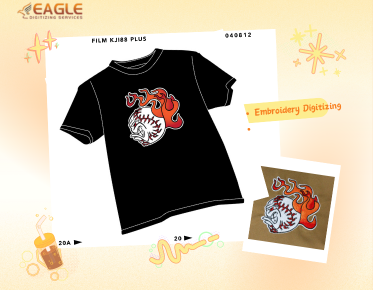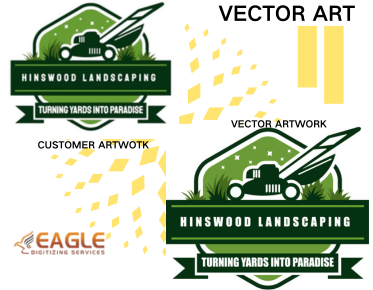Why are geometric elements and abstract shapes important in vector design?
Vector design is a versatile and dynamic art form that heavily relies on geometric elements and abstract shapes. These components are essential not just for their aesthetic appeal but also for their functional benefits when creating impactful vector graphics. Understanding the significance of these elements can enhance one's capability to produce visually compelling and effective vector art.
The Role of Geometric Elements
Geometric elements form the backbone of vector design, offering stability, structure, and clarity to artwork. Shapes like circles, squares, triangles, and polygons provide a straightforward way to construct designs that are easy to interpret and functional across different media. These basic elements allow designers to create complicated patterns, compelling visual contrasts, and conceptual illustrations that can be resized effortlessly without loss of quality—key benefits of vector graphics.
These elements also aid in achieving an elegant simplicity. A single well-placed geometric shape can have a profound impact and serve as a focal point in the design. They enable designers to experiment with balance and symmetry, fundamental principles in crafting aesthetically pleasing compositions. Additionally, geometric shapes can be repeated and overlapped to create pattern-based designs, adding depth and texture while maintaining simplicity.
Importance of Abstract Shapes
Abstract shapes in vector design provide a different set of advantages. They offer creative freedom and an opportunity to express ideas that cannot be easily captured by regular geometric shapes. Abstract elements can evoke emotions and convey messages in unique and subtle ways, making them perfect for brands that want to communicate a complex identity. The use of abstract shapes can also add an artistic flair, drawing viewers in with their intriguing and often unconventional forms.
By incorporating abstract shapes, designers can create designs that are not only captivating but memorable. They prompt viewers to engage with the imagery, uncover underlying meanings, and appreciate the visual storytelling. In essence, they possess the power to transform simple messages into profound experiences. Abstract shapes in vector design are especially useful in digital media, where capturing and retaining attention is crucial.
Scalability and Functionality
One of the greatest strengths of vector graphics is scalability. Geometric and abstract shapes can be resized to fit any scale, from minute icons on mobile apps to large banners for advertising, without any loss of quality. This is primarily because vectors are made up of paths defined by mathematical coordinates, unlike raster graphics that rely on pixels which can become blurry when enlarged. This scalability empowers designers to create designs that are versatile and adaptable, a necessity in today’s fast-paced design environment.
The functional aspect of vector design is widely supported by services like Eagle Digitizing, known for their expertise in converting intricate designs into clean, scalable vectors. Their attention to detail ensures that each design captures the essence of the original artwork, allowing for seamless integration into any project. Whether it's through vector art services or raster to vector conversion services, the infusion of quality and precision is evident【4:3†source】.
Applications in Branding and Marketing
Within marketing and branding, geometric and abstract shapes carry significant weight. Brands often utilize geometric shapes for logos, given their clean lines and clarity. For instance, a circle might represent unity and wholeness, which are core values for many companies. Meanwhile, abstract shapes let a brand introduce creativity and uniqueness into its visual identity, helping it stand out in a crowded marketplace.
Incorporating geometric and abstract elements in logos and brand designs not only strengthens a brand’s identity but also enhances memorability and recognizability. Designs that are unique yet clear can help communicate the brand's message succinctly, fostering stronger connections with their audience. Major brands that have successfully employed these elements often enjoy high recall value, making them industry benchmarks in effective branding strategies.
Trends in Vector Design
The design landscape continually evolves, and vector design is no exception. Recently, the blend of geometric structures with organic, abstract forms has gained traction【4:3†source】. This fusion reflects a dynamic approach where designers leverage both structured and fluid elements to craft compositions that are both innovative and aesthetically pleasing.
Moreover, with the rise of digital platforms, the need for designs that are not only eye-catching but also optimized for various devices is crucial. Vectors lend themselves well to this demand, providing endlessly adaptable artwork that maintains integrity across different dimensions and resolutions.
Looking Ahead
As we look to the future, the importance of geometric and abstract shapes in vector design will likely continue to grow. The ongoing shifts toward digital transformation mean that designs need to be more flexible, scalable, and visually impactful than ever before. The challenge will be to innovate within these parameters, exploring new ways to utilize these elements creatively and effectively.
For designers and businesses looking to stay ahead, understanding the power of geometric and abstract elements in vector design can offer a competitive edge. Engaging with vector conversion services and working alongside skilled vectorization professionals like those at Eagle Digitizing will be invaluable in navigating this evolving landscape【4:3†source】.


